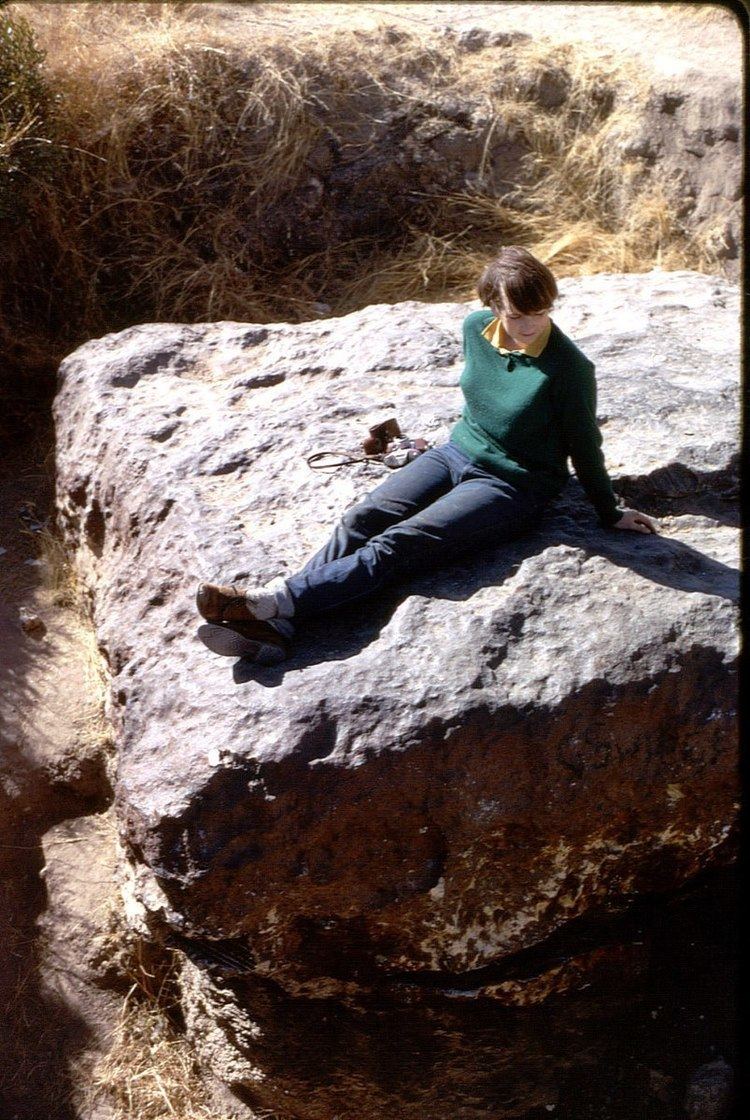 | ||
The Hoba (/ˈhoʊbə/ or HOH-bə) or Hoba West meteorite lies on the farm "Hoba West", not far from Grootfontein, in the Otjozondjupa Region of Namibia. It has been uncovered but, because of its large mass, has never been moved from where it fell. The main mass is estimated at more than 60 tons, making it the largest known meteorite (as a single piece) and larger than the 37-ton fragment of the Campo del Cielo. It is the most massive naturally occurring piece of iron known on Earth's surface.
Contents
Impact
The Hoba meteorite impact is thought to have occurred more recently than 80,000 years ago. It is inferred that the Earth's atmosphere slowed the object to the point that it impacted the surface at terminal velocity, thereby remaining intact and causing little excavation. Assuming a drag coefficient of about 1.3, the meteor would have been slowed to about 720 miles per hour (0.32 km/s) from its speed on entering the Earth's atmosphere, typically in excess of 10 km/s for similar objects. The meteorite is unusual in that it is flat on both major surfaces, possibly causing it to have skipped across the top of the atmosphere like a flat stone skipping on water.
Discovery
The Hoba meteorite left no preserved crater and its discovery was a chance event. The owner of the land, Jacobus Hermanus Brits, encountered the object while ploughing one of his fields with an ox. During this task, he heard a loud metallic scratching sound and the plough came to an abrupt halt. The obstruction was excavated, identified as a meteorite and described by Mr. Brits, whose report was published in 1920 and can be viewed at the Grootfontein Museum in Namibia.
Friedrich Wilhelm Kegel took the first published photograph of the Hoba meteorite.
Description and composition
Hoba is a tabloid body of metal, measuring 2.7×2.7×0.9 metres (8.9×8.9×3.0 ft). In 1920 its mass was estimated at 66 tons. Erosion, scientific sampling and vandalism reduced its bulk over the years. The remaining mass is estimated at just over 60 tons. The meteorite is composed of about 84% iron and 16% nickel, with traces of cobalt. It is classified as an ataxite iron meteorite belonging to the nickel-rich chemical class IVB. A crust of iron hydroxides is locally present on the surface, owing to weathering.
Modern history
In an attempt to control vandalism and with permission from Mrs. O. Scheel, owner of the farm at the time, the government of South West Africa (now Namibia) on March 15, 1955, declared the Hoba meteorite to be a national monument. In 1985 Rössing Uranium Ltd. made resources and funds available to the Namibian government to provide additional protection against vandalism. In 1987 Mr. J. Engelbrecht, the owner of Hoba West farm, donated the meteorite and the site where it lies to the state for educational purposes. Later that year the government opened a tourist centre at the site. As a result of these developments, vandalism of the Hoba meteorite has ceased and it is now visited by thousands of tourists every year.
